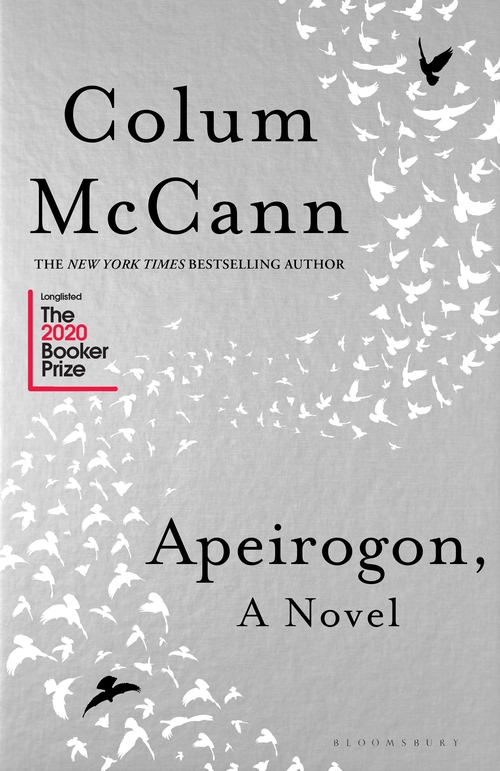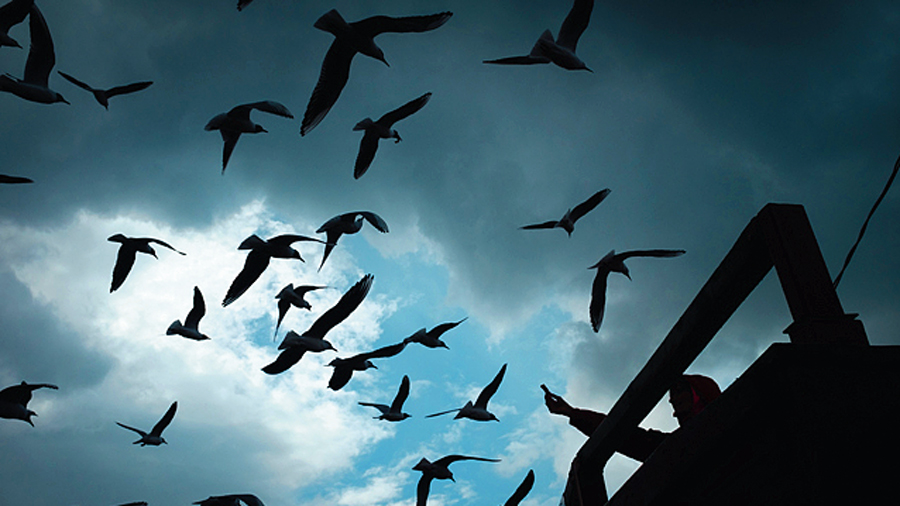Book: Apeirogon, A Novel by Colum McCann, Bloomsbury, Rs 550
Author: Colum McCann
Publisher: Bloomsbury
Price: Rs 550
Birds circle the skies over Israel and Palestine, as do helicopters and drones. Down below, the terrain is scarred with checkpoints, walls, roadblocks, barricades, and security guards, dividing the land as well as the lives on the two sides. “Geography,” Colum McCann asserts repeatedly, “is everything.” In the novel, the stories of Israel and Palestine merge as the paths of Rami and Bassam — belonging to either side of the border — intersect at a common point: the loss of their daughters to the enmity between the two States.
An apeirogon, McCann explains, is a figure with infinite sides that “approaches the shape of a circle, but a magnified view of a small piece appears to be a straight line”. The novel is woven around this concept: it comprises 1,001 vignettes — after reaching the 500th piece, the segments count backwards to 1, with a single story in between. Some of these consist of a single line, some just an image. As such, Apeirogon makes an impressive attempt to push the boundaries of established structures of the postmodern novel. The number of sections tellingly refers to the One Thousand and One Nights — tales “gathered at different times in myriad places”. The individual vignettes talk of disparate things, connected by a loose thread of associations — of words, memories, history and, at times, trivia. Yet, McCann knows exactly when to pull the thread to give the story the right twist and tug at the heartstrings of the reader. One seldom notices when one is caught in the lyrical web of stories and is taken on a circular trip — for instance, reading about rings around birds’ feet to tiny bird-feeders made of hollowed-out bullets to the rubber bullet that killed Bassam’s daughter, one is led back to rings, drawn around the photographs of dead soldiers. The meaning that emerges out of the fragments of the novel, then, is greater than the sum of its parts.

Apeirogon, A Novel by Colum McCann, Bloomsbury, Rs 550 Amazon
Any semblance of monotony is broken by McCann’s experiments with chronology — the narrative jumps back and forth in time in a wink, and, at other times, stretches out a moment to its breaking point — as well as by his dexterous juggling of binaries — past and future, life and death but, most importantly, fact and fiction. The central plot of the novel draws on the actual accounts of the two fathers. As McCann tells the stories of the deaths of Abir and Smadar, the two girls, in the same breath as those of Picasso drawing by candlelight as a child or the bombing of Nagasaki, he not only dissolves the fictionality of the girls’ death but also situates the crisis of the Middle East within the history of the rest of the world that the latter seems to conveniently ignore.
Apeirogon holds no promise of justice or redemption — like Rami and Bassam who keep repeating the story of the death of their daughters to different sets of people around the world, this, too, is about “a beginning without an end.” What the novel does is uphold the power of storytelling. Storytelling, here — just as Borges observes about One Thousand and One Nights — becomes a “ruse for life in the face of death.” As McCann disarms the readers with his narrative that is deceptively impersonal and evocative at the same time, Bassam and Rami engage in their own loop of storytelling in a bid to move enough number of people in order to break the endless chain of violence that has bound Israel and Palestine for ages.










